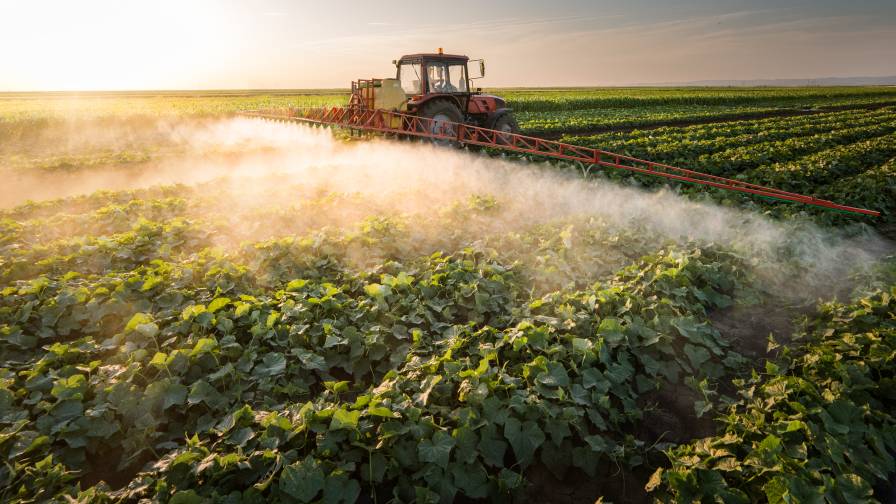Setting Sights on Southeast Asia
Editor’s Note: Top input suppliers and distributors will meet at the FCI Trade Summit at the Grand Hyatt Jakarta, 3-4 December, 2012. Visit the event website to begin to find new trading partners, products and information for your business.
World pesticide use is rising at about 8%, and that growth rate is bolstered by developing economies in Asia, which is growing faster than the world average. In developed economies, specifically in Western Europe and the United States, value was near flat in 2011. Eastern Europe is experiencing some notable growth with the expansion of large farms, and South America’s major markets, such as Brazil and Argentina, are enjoying strong growth amid high commodity prices and the ongoing rapid adoption of Roundup Ready crops. While large markets still offer revenue opportunities because of the large market values, emerging markets represent the promise of a growing global agriculture industry.
Southeast Asia is under immense pressure to produce greater yields on its croplands for several reasons. First, commodity crops are crucial to the export economies that increasingly rely on agriculture GDP. In Southeast Asia, palm oil, rice, coffee, rubber, cocoa and, increasingly, fruits and vegetables are key export commodities that help fuel trade. About 15% of Indonesia’s GDP comes from agriculture. In Vietnam it is 20%, and many other Asian countries rely on agriculture for double-digit GDP contributions.
Crop protection is proving to be more than a way to optimize crop yields; adoption is fueling national economies that are increasingly reliant on export sales. Asia constituted 16% of the global crop protection value in 1995 — less than $4 billion in sales in a $27.5 billion industry. In less than two decades, Asia’s value has almost tripled to more than $11.6 billion, representing 26% of global value amid 16% growth in 2011.
The reasons for this are diverse. And despite the successful growth of the region, it is still laden with challenges and further promise. In Indonesia, the market is growing at about 8% annually, according to CropLife Indonesia Executive Director Deddy Djuniadi. Much of that consumption is herbicides to care for its most widely cultivated crops: rice and corn. Indonesia is the second-most productive rice-producing country with an average of 4.9 tonnes per hectare.
“The demand for pesticides here in the rice paddy depends on irrigation,” says Paras Bhojwani, CEO of PT Dalzon Chemicals Indonesia, a $20 million formulator and distributor in Jakarta. “Irrigated paddy has steady demand, but rainfed areas are less predictable for burndown.”
Soybeans are rising in planted area by about 20% per year, and horticulture crops, including potatoes, shallots, chili and others are strong consumers of fungicides in the region. Dalzon is in the process of establishing a seed business to capitalize on the growing farmer demand for these high-value crops. And like many growing economies, one of the biggest challenges is transferring the knowledge of technology to the farmer.
“We have quite aggressive marketing tools in the field,” Bhojwani says. “For us, the priority is to teach farmers about the utility of our products, so we do a lot of field days to demonstrate them.”
Plantation Boom
Indonesia’s largest consumers of crop protection products are plantations. Palm oil, rubber, coffee, sugarcane and cocoa are key export crops. Historically, the rich volcanic soil in Indonesia, especially in Java, has generated excellent yields for plantation owners. But the continued mining of soils has depleted many nutrients and made crops more susceptible to pests. This year’s cocoa crop is severely damaged by years of neglect.
Better investment into agriculture is fueling a revolution at the plantation level. First, cocoa investment schemes are creating funding for good agriculture practices, especially fertility and fungicide treatment. Indonesia is the world’s third-largest producer of cocoa, and large companies including Cargill recently have built grinding facilities in Indonesia to meet burgeoning demand for chocolate in Asia.
On palm oil plantations, many farmers are beginning to realize the value of intensifying crops. Partly driven by Malaysian investors implementing their good agriculture practices in Indonesia, crop input expenditures are on the rapid rise, and yields are climbing near the levels of its northern neighbor. The trend has crop input distributors eager to redouble their efforts in Indonesia.
“We still have many opportunities in Indonesia,” says Toto Pratikto, procurement manager for PT Everspring Indonesia, a distributor with eight offices around Java and Sumatra. “Rubber, coffee and cocoa have seen some significant yield increases. Small farmers are able to have a good harvest, and farmers who see this are beginning to understand how much more money they can make.”
The island of Java is the largest plantation center, and almost completely saturated. However, plantations in Sumatra, Kalimantan and Sulawesi are expanding rapidly. Many agriculture businesses see growth there as developmental, often hampered by lack of farmer education and challenges in distribution.
“Incentives given by government have established a strong foundation in Sumatra, and many plantation owners are now growing (on the eastern islands). So we are trying to give them the right tools to increase production in those regions, where the soil and growing conditions are different from Java and Sumatra,” says Jhonson Sahlan, director of PT Agro Natural, a distributor with about a dozen offices throughout Indonesia. “But we need to proceed cautiously. The cost of transportation is very high, and local customs can be difficult to navigate.
“However, we think there is a lot of opportunity, and if we succeed in being a driving force for education, then we know we can help drive higher extraction rates [of palm oil] and build allegiances with growers who are developing operations there. It’s the next big expansion for Indonesia, and we are committed to it.”






